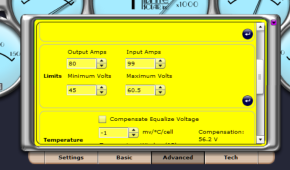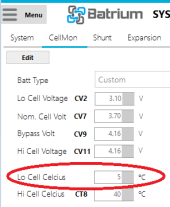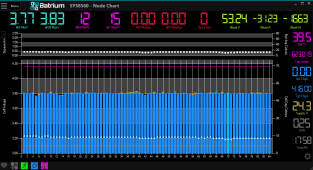OffGridInTheCity
Solar Wizard
In my case / climate - the batteries never go below 5C/51F so this isn't an issue.Offgrid-I’m curious what happens on a cold, sunny day when the BMS shuts down the batteries and the controller is left in an extended high voltage condition.
But if it were to occur - the BMS disconnects the batteries from the the 'system' via the shunt-trip breaker, so the Charge Controllers are no longer connected to them and can't try to charge them.
Midnites are fine when disconnected from the battery as described above - they just stop charging regardless of incoming PV. They are made to shunt-off the incoming PV, no problem. Midnites even allow you to set the max charging amps (going out to the battery) OR PV amps coming in - regardless of PV array itselfAre Midnites uniquely able to handle this? It seems to violate the rule of “hook up the batteries first.”
Or can the Midnite tell itself to shut down the input from the panels before the battery BMS calls it quits?

I use this because I have 80a breakers at the battery control box but my array can occasionally generate up the 86a the 150s allow - and in fact caused my 80a breakers to trip. So rather than buy 100a breakers I just set the max output to 80a you see above.... since it rarely happens.






